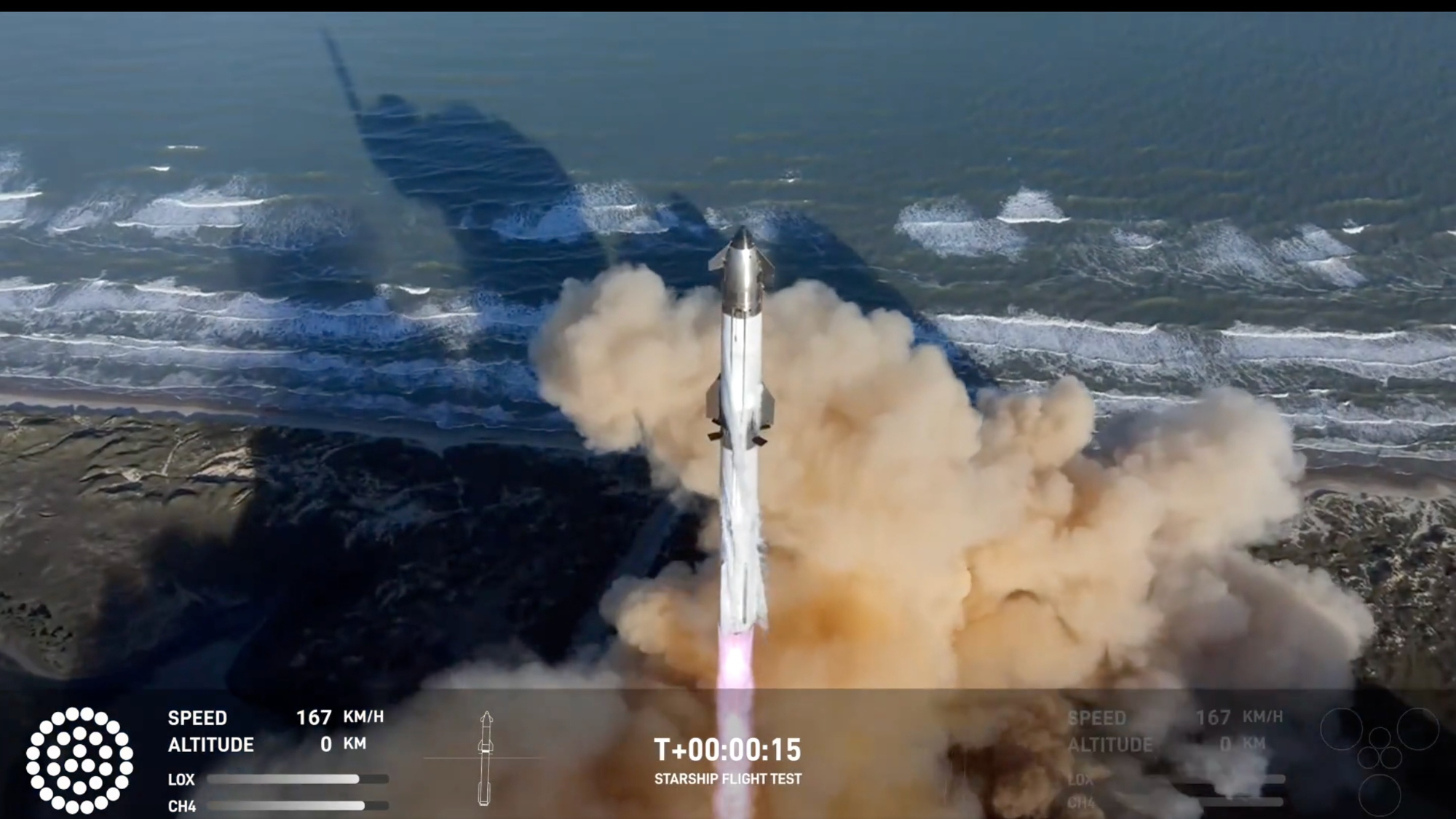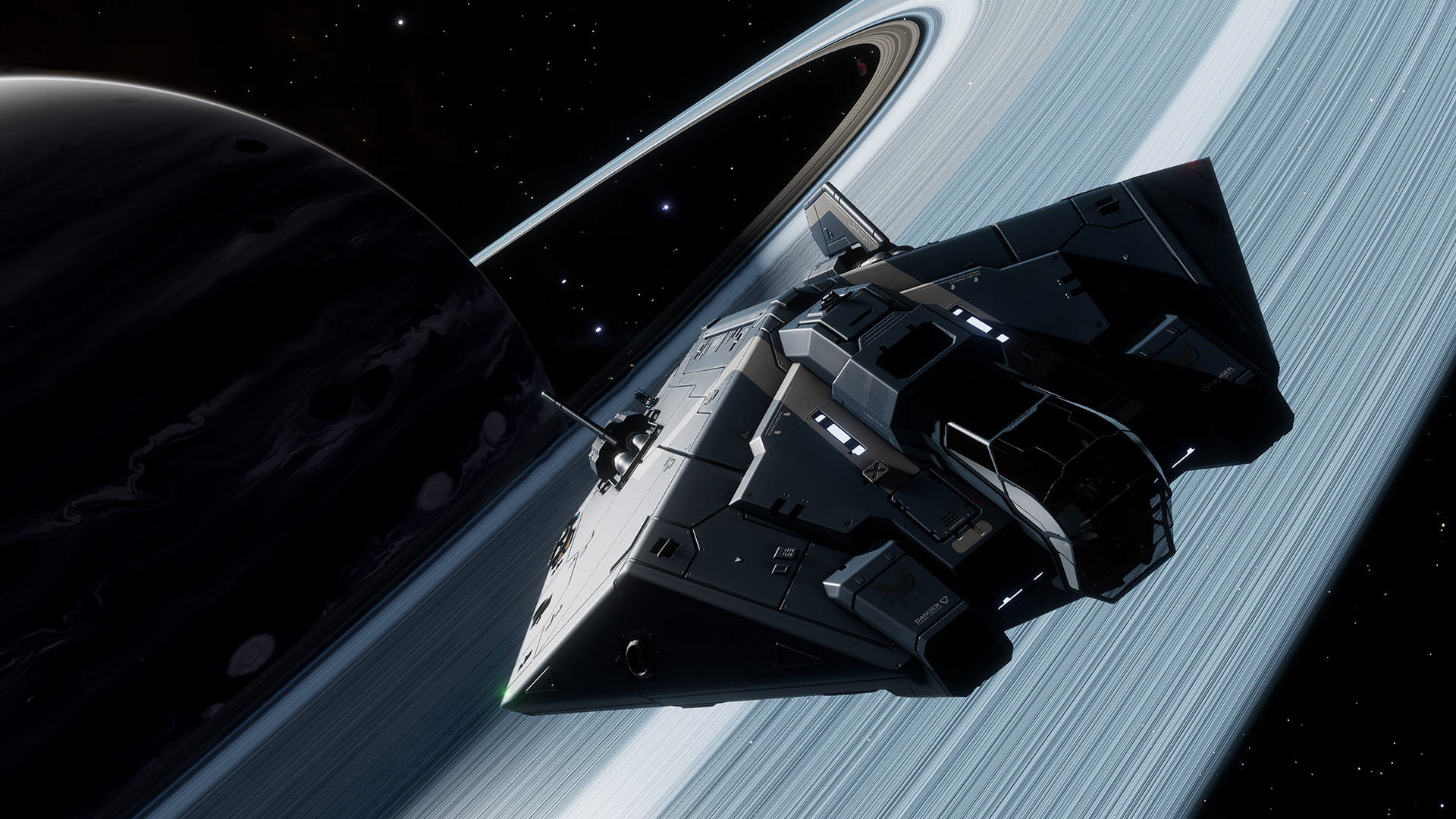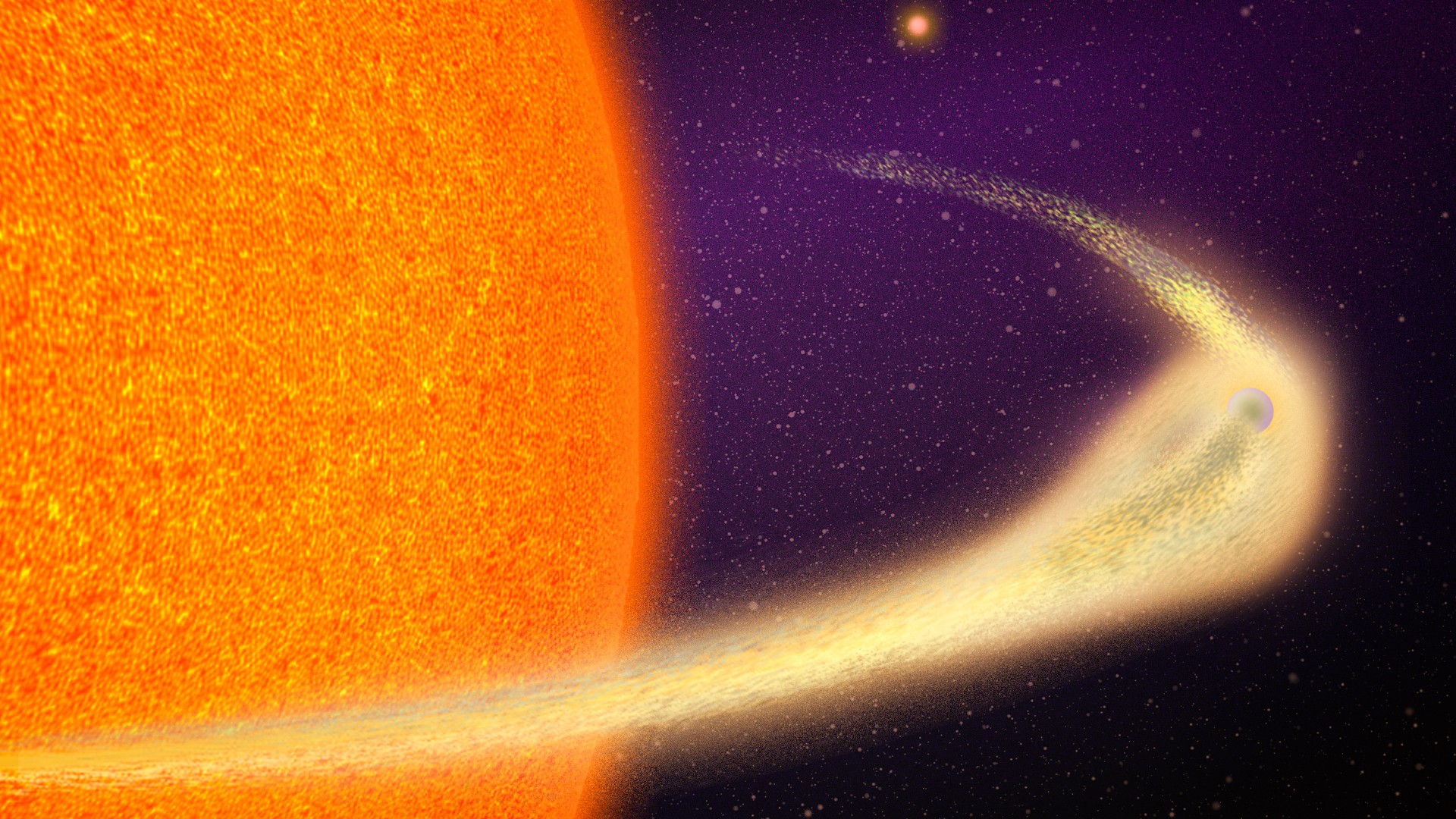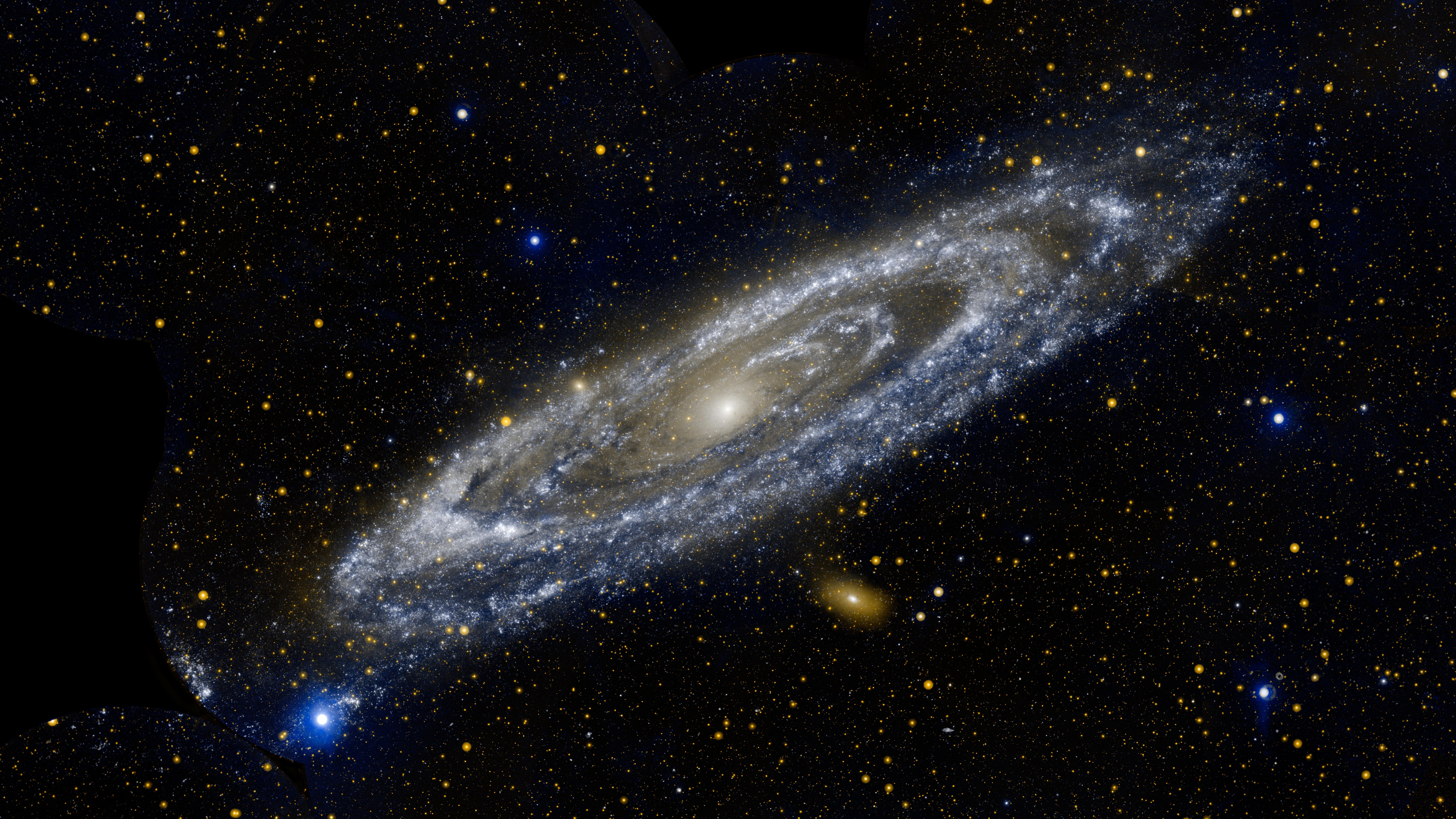The seventh test flight of SpaceX's Starship had some serious highs and lows.
The company launched its Starship megarocket for the seventh time ever today (Jan. 16), sending the 403.5-foot-tall (123 meters) reusable vehicle aloft from its Starbase site in South Texas at 5:37 p.m. EST (2237 GMT; 4:37 p.m. local time).
One of the goals of this ambitious test flight was to catch Starship's giant first-stage booster, known as Super Heavy, back at Starbase's launch tower, using the structure's "chopstick" arms. SpaceX pulled this off for the first time on Starship Flight 5 in October — and did so again today.

The 33-engine booster nestled softly into the tower's arms about seven minutes after liftoff today, showcasing the time-saving recovery strategy that SpaceX intends to use for both Super Heavy and Ship, Starship's 171-foot-tall (52-meter-tall) upper stage.
Related: Starship and Super Heavy explained
But not everything went to plan today. SpaceX lost contact with Ship around 8.5 minutes into flight, apparently after the vehicle suffered some kind of anomaly.
All six of Ship's Raptor engines fired up during the stage's ascent burn, "but as we were getting to the end of that ascent burn, we saw engines dropping out on telemetry, and we have since lost contact with the Ship,” Dan Huot, of SpaceX's communications team, said during the company's launch webcast.
Get the Space.com Newsletter
Breaking space news, the latest updates on rocket launches, skywatching events and more!
Huot and fellow webcast host Kate Tice later confirmed that Ship had been lost. The reasons were not immediately clear, the duo said.
Ship was supposed to fly much of the way around the world, then splash down softly in the Indian Ocean off the west coast of Australia about 66 minutes after liftoff, as it did on the three previous Starship launches.

Flight 7 was supposed to feature something new for Ship as well: About 17.5 minutes after liftoff, the upper stage was to deploy 10 mock satellites similar in size and weight to the next-gen version of SpaceX's Starlink broadband spacecraft. Ship didn't make it that far into flight, however.
The deployment would have been useful practice. SpaceX is counting on Starship to finish building out its Starlink megaconstellation, which currently consists of nearly 7,000 satellites in low Earth orbit but could eventually harbor more than 40,000 craft.
The dummy satellites were to follow Ship's suborbital trajectory, ultimately splashing down in the Indian Ocean, SpaceX wrote in a Flight 7 mission description.
As Huot and Tice noted, the Ship upper stage flying today was a new iteration that sported a suite of upgrades and modifications.
"The vehicle’s forward flaps have been reduced in size and shifted towards the vehicle tip and away from the heat shield, significantly reducing their exposure to reentry heating while simplifying the underlying mechanisms and protective tiling," SpaceX wrote in the mission description.
"Redesigns to the propulsion system, including a 25% increase in propellant volume, the vacuum jacketing of feedlines, a new fuel feedline system for the vehicle’s Raptor vacuum engines, and an improved propulsion avionics module controlling vehicle valves and reading sensors, all add additional vehicle performance and the ability to fly longer missions," the company added.
These modifications added about 6.5 feet to the vehicle's length, according to SpaceX.
The Super Heavy that flew today was largely the same as recent boosters, but it did have one novel feature. In a Super Heavy first, it employed used hardware — a Raptor engine that also flew on Flight 5.
Starship Die Cast Rocket Model Now $47.99 on Amazon.
If you can't see SpaceX's Starship in person, you can score a model of your own. Standing at 13.77 inches (35 cm), this is a 1:375 ratio of SpaceX's Starship as a desktop model. The materials here are alloy steel and it weighs just 225g.
Starship's previous six test flights occurred in April and November of 2023 and March, June, October and November of last year. SpaceX aimed to conduct a chopsticks catch of Super Heavy on Flight 6 as well, but a communication issue with the launch tower nixed that try, and the booster diverted for a Gulf of Mexico splashdown.
SpaceX is developing Starship, the biggest and most powerful rocket ever built, to help humanity settle the moon and Mars, among other feats. And we should expect to see more than a mere handful of Starship test flights this year; the company aims to make serious progress on the vehicle in 2025.
"This new year will be transformational for Starship, with the goal of bringing reuse of the entire system online and flying increasingly ambitious missions as we iterate towards being able to send humans and cargo to Earth orbit, the moon and Mars," SpaceX wrote in the Flight 7 mission description.
Join our Space Forums to keep talking space on the latest missions, night sky and more! And if you have a news tip, correction or comment, let us know at: community@space.com.

Michael Wall is a Senior Space Writer with Space.com and joined the team in 2010. He primarily covers exoplanets, spaceflight and military space, but has been known to dabble in the space art beat. His book about the search for alien life, "Out There," was published on Nov. 13, 2018. Before becoming a science writer, Michael worked as a herpetologist and wildlife biologist. He has a Ph.D. in evolutionary biology from the University of Sydney, Australia, a bachelor's degree from the University of Arizona, and a graduate certificate in science writing from the University of California, Santa Cruz. To find out what his latest project is, you can follow Michael on Twitter.
-
William Wolff I did notice that there was some metal peeled away and fluttering on the left side of the skin during lift off.Reply -
ChrisA Today we saw a kind of symmetry.Reply
Blue Origin's NG-1 launched in the early morning. The second stage reached orbit but the first stage did not landSpaceX's Starship Test 7 landed the first stage but lost the second stage.
All on the same day -
Unclear Engineer So where did this StarShip end up? It obviously was not intended to burn up completely during reentry. But, if it lost attitude control, maybe it did mostly burn up or at least disassemble on reentry if it was not flying heat shield first.Reply
Have there been any reports of space debris? Edit: from another source: "Video soon appeared on social media showing what may be debris from the vehicle burning up and falling over the Turks and Caicos." The video clearly shows that the Ship exploded and reentered in fragments. If any made it to the surface, they are now at the bottom of the Atlantic Ocean.
Will FAA call this another "mishap" and ground StarShip again? -
Rob77 Reply
Sadly, I think it will be labelled a mishap due to the re-entry of debris after the RUD. And unfortunately, probably wont see another test flight for a few months until FAA are satisfied, I hope I'm wrong though.Unclear Engineer said:Will FAA call this another "mishap" and ground StarShip again? -
Unclear Engineer Staran, it works for me. Click on the "see more" in the inclusions that fade out at the bottom.Reply -
Rob77 Reply
I dont see them either while using Firefox with the ad blockers.Staran said:Why can I not find a video in an article which says "(...video, photos)"?
I have to jump on another web browser, eg. Chrome to see them or remove the ad blocker.
However, if I don't use ad blocker for this site I think my eyes start to hurt with all the ads that pop up.










